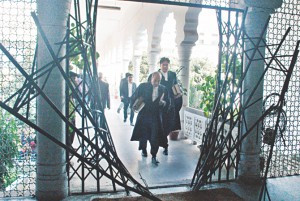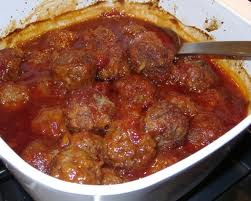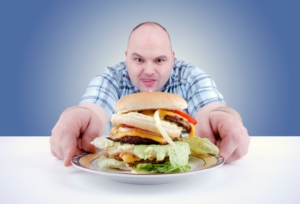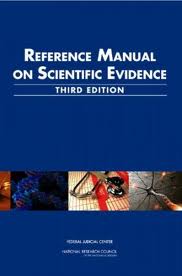California appellate court bucks national trend, allows plaintiff experts to opine that “every asbestos exposure is a substantial factor”
By Christopher Strunk, Oakland on March 4, 2016
Courts from around the country have rejected efforts by plaintiff experts to testify that every asbestos exposure is a substantial factor in causing disease. On March 3, 2016, California’s second appellate district went the other way, and held in Davis v. Honeywell International, Inc. that the controversial “every exposure counts” theory is admissible under governing expert witness law. Thus, although trial courts are supposed to play a “gatekeeper” role in keeping out unreliable expert evidence (Sargon Enterprises, Inc. v. University of Southern California (2012) 55 Cal.4th 747), Davis breaks the gate wide open in allowing a jury, not the trial court in its “gatekeeper” role, to decide whether to accept the theory.
Davis was a wrongful death case. Sam Davis worked as an auto mechanic and home remodeler from approximately 1963 to 1979. He performed “one or two” brake jobs per day, and always used Bendix brake linings (for which defendant Honeywell was responsible). These linings contained 50 percent chrysotile asbestos by weight. He was also allegedly exposed to asbestos as a result of his home remodel work.
wrongful death case. Sam Davis worked as an auto mechanic and home remodeler from approximately 1963 to 1979. He performed “one or two” brake jobs per day, and always used Bendix brake linings (for which defendant Honeywell was responsible). These linings contained 50 percent chrysotile asbestos by weight. He was also allegedly exposed to asbestos as a result of his home remodel work.
Prior to trial, Honeywell filed a motion in limine to preclude plaintiff from presenting expert opinion testimony that every exposure to asbestos above background contributed to decedent’s disease. The motion was denied, and plaintiff’s pathologist (James A. Strauchen, M.D.) and pulmonologist (William Rom, M.D.) were permitted to testify and advance the theory. Ultimately, the jury found for plaintiffs, and Honeywell appealed.
Honeywell’s primary basis for appeal was that the “every exposure counts” testimony of Dr. Strauchen should have been excluded. Honeywell advanced four arguments: (1) the testimony was speculative and illogical; (2) the regulatory standards Strauchen relied upon cannot establish causation; (3) no appropriate scientific literature supports the theory; and (4) the theory is contrary to California causation law espoused in Rutherford v. Owens Illinois (1997) 16 Cal.4th 953, which held that not every exposure to asbestos is a “substantial factor” in causing disease.
Davis rejected each of Honeywell’s arguments. “Having reviewed much of the commentary and scientific literature cited in support of and against the ‘every exposure’ theory, we conclude that the theory is the subject of legitimate scientific debate. Because in ruling on the admissibility of expert testimony the trial court ‘does not resolve scientific controversies (Sargon), it is for the jury to resolve the conflict between the every exposure theory and any competing expert opinions.” The court focused largely on the mere existence of evidence that supported the “every exposure counts” theory, and declined to weigh the evidence or any competing inferences. “While Honeywell is generally correct that in many (or even most) instances epidemiological studies provide the best evidence of causation, its implied argument that it is improper for an expert to rely upon any other tools to determine causation, such as case reports, is not universally accepted.” As to Honeywell’s argument that “every exposure” contravenes Rutherford, Davis interpreted Rutherford as not requiring a “dose level estimation,” instead issuing a sweeping statement interpreting Rutherford as supporting the conclusion that even a very small “dose” could increase the risk of asbestos-related cancer. Davis distinguished the many cases from other jurisdictions rejecting this argument, including Betz v. Pneumo Abex, LLC (2012) 615 Pa. 504, Bostic v. Georgia-Pacific Corp. (Tex. 2014) 439 S.W.3d 332 and Moeller v. Garlock Sealing Technologies, LLC (6th Cir. 2011) 660 F.3d 950. “[W]e simply disagree” that the “every exposure” theory could not be “reconciled with the fact that mesothelioma and other asbestos-related diseases are dose-dependent.”
The Davis court did state, however, that “[w]e caution that our discussion of the materials Dr. Strauchen relied upon should not be seen as approval of either side in that scientific dispute. Rather, we rely upon the rule of Sargon that although trial courts ‘have a substantial ‘gatekeeping’ responsibility,’ in evaluating proposed expert opinion . . . the gate tended is not a partisan checkpoint . . . If the opinion is based on materials on which the expert may reasonably rely in forming the opinion, and flows in a reasoned chain of logic from those materials rather than from speculation or conjecture, the opinion may pass, even though the trial court or other experts disagree with its conclusion or the methods and materials used to reach it.” (emphasis added)
Further, although much of the discussion relates to the “any exposure” theory, Davis pointed out that the case did not hinge on that theory. “In this case, Dr. Strauchen was presented with a hypothetical based on the facts surrounding Davis’ exposure to dust from his work on Bendix brake linings, and testified as to estimates of the amount of asbestos fibers contained in visible dust. Therefore, his conclusion that Davis’ exposure to Bendix brake linings was a substantial factor in contributing to the risk of mesothelioma was not based simply on “any exposure” to asbestos, but instead related to an estimate of actual exposure.”
The decision is not yet final. It is still subject to a petition for rehearing, which could result in a change in the opinion, and to either or both a request for depublication and a petition for review to the California Supreme Court, either of which if granted would make this decision uncitable in California courts, though not necessarily elsewhere.

 Accutane was approved by the Food and Drug Administration in 1982 to treat a severe form of acne, which can cause disfigurement on the face and back of those affected. Crohn’s Disease is a serious chronic inflammation of the gastrointestinal tract that can cause gastrointestinal bleeding, among other symptoms, and carries an increased risk of cancer. Most scientific literature has concluded that the cause of CD and IBD remains unknown.
Accutane was approved by the Food and Drug Administration in 1982 to treat a severe form of acne, which can cause disfigurement on the face and back of those affected. Crohn’s Disease is a serious chronic inflammation of the gastrointestinal tract that can cause gastrointestinal bleeding, among other symptoms, and carries an increased risk of cancer. Most scientific literature has concluded that the cause of CD and IBD remains unknown. When a homeowner brings a multi-count toxic tort case alleging that a corporate defendant’s discharge of toxic substances from its facility contaminated his property, the diminution of property value claim is often the only element of damages subject to objective determination. Or is it?
When a homeowner brings a multi-count toxic tort case alleging that a corporate defendant’s discharge of toxic substances from its facility contaminated his property, the diminution of property value claim is often the only element of damages subject to objective determination. Or is it? as well. Because plaintiffs admitted that they knew the groundwater under their properties was contaminated with TCE when they bought their homes, remediating the property to “if clean” levels would improve the property beyond what plaintiffs purchased and give them a windfall. According to the court, the proper valuation analysis should take into account what plaintiffs knew of the condition of the property at the time of purchase.
as well. Because plaintiffs admitted that they knew the groundwater under their properties was contaminated with TCE when they bought their homes, remediating the property to “if clean” levels would improve the property beyond what plaintiffs purchased and give them a windfall. According to the court, the proper valuation analysis should take into account what plaintiffs knew of the condition of the property at the time of purchase. In examining the “interviews/surveys” approach, the court questioned why McHale doubled the discount from 20% to 40% without explaining why the realtors would not have taken into consideration the other factors McHale discussed when giving their responses. Presumably, the discounted selling price already took into consideration any difficulty in obtaining financing and any increased marketing costs. Therefore, these considerations should not be counted twice in coming up with a discount.
In examining the “interviews/surveys” approach, the court questioned why McHale doubled the discount from 20% to 40% without explaining why the realtors would not have taken into consideration the other factors McHale discussed when giving their responses. Presumably, the discounted selling price already took into consideration any difficulty in obtaining financing and any increased marketing costs. Therefore, these considerations should not be counted twice in coming up with a discount. In an Opinion and Order, dated May 31, 2013, the
In an Opinion and Order, dated May 31, 2013, the 
 amount of peppermint oil inhaled.
amount of peppermint oil inhaled. raise issues concerning the cause of plaintiff’s illness by obtaining a detailed medical history of plaintiff. The court rejected Dr. Levy’s reliance on the temporal proximity between plaintiff’s exposure to the product and the onset of plaintiff’s symptoms. In particular, the court observed that plaintiff began experiencing reflux hours after having a heavy meal of “spaghetti with seafood.”
raise issues concerning the cause of plaintiff’s illness by obtaining a detailed medical history of plaintiff. The court rejected Dr. Levy’s reliance on the temporal proximity between plaintiff’s exposure to the product and the onset of plaintiff’s symptoms. In particular, the court observed that plaintiff began experiencing reflux hours after having a heavy meal of “spaghetti with seafood.” For the toxic tort practitioner, the Reference Manual on Scientific Evidence is an indispensable reference work. As with previous editions, the Third Edition is organized according to the important scientific and technological disciplines often encountered by federal (or state) judges. It would be difficult to imagine preparing any toxic tort case for trial (or the filing of a Daubert motion) without reviewing, for example, the manual’s chapters on exposure science, epidemiology, toxicology, neuroscience and/or engineering.
For the toxic tort practitioner, the Reference Manual on Scientific Evidence is an indispensable reference work. As with previous editions, the Third Edition is organized according to the important scientific and technological disciplines often encountered by federal (or state) judges. It would be difficult to imagine preparing any toxic tort case for trial (or the filing of a Daubert motion) without reviewing, for example, the manual’s chapters on exposure science, epidemiology, toxicology, neuroscience and/or engineering.  Over the years, I have become an enormous fan of
Over the years, I have become an enormous fan of